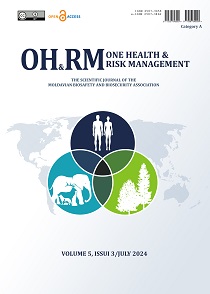Abstract
Introduction. The intestinal microbiocenosis is the most complex and important biotope of the body formed in the process of individual development.
Material and methods. The study was conducted on groups of 20-25-day-old chicks. The first group was housed under standard vivarium conditions with artificially maintained optimal climatic parameters. The second group was raised in a rural homestead in the Kyiv region, on pasture with access to water, and fed twice daily with a blend of grains supplemented with kitchen wastes. Samples of chicken droppings (10 per group) were analyzed according to current international ISO standards using certified nutrient media and equipment.
Results. Escherichia coli, Klebsiellas spp., Enterococcus spp. were isolated from 100% of samples from chickens kept in simulated conditions of an industrial poultry house, and Pseudomonas aeruginosa was isolated from 70% of samples. Escherichia coli and Enterococcus spp. were isolated from free-range chickens in 100% of cases. The analysis revealed that in pasture-raised chickens, Klebsiella spp. and Pseudomonas aeruginosa were absent from the litter, with significantly higher levels of normal microflora (Enterococcus spp.).
Conclusions. Backyard-raised chickens showed no pathogenic zoonotic bacteria, in contrast to those raised under controlled conditions with optimal climate and standard diets.
Висновки. Виявлено відмінності у складі індикаторних бактерій курячого посліду за різних умов утримання. Встановлено відсутність патогенних зоонозних бактерій у курей в умовах подвірного утримання, на відміну від курей, які утримувалися в умовах штучного забезпечення оптимальних кліматичних умов на стандартному раціоні.
|
 Views: 849|
|
Views: 849|
|
This work is licensed under a Creative Commons Attribution 4.0 International License.
Copyright (c) 2024 Valerii Ushkalov, Artem Ushkalov, Liliana Davydovska, Valerii Ushkalov, Volodymyr Melnyk, Oleksii Shevchenko, Iryna Musiiets

